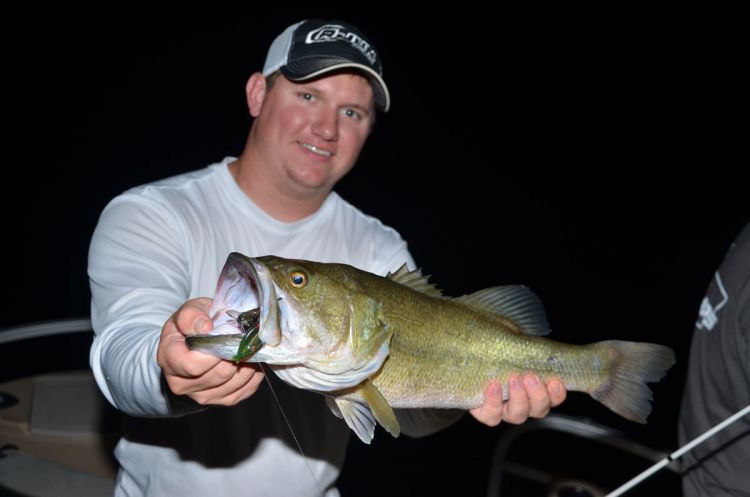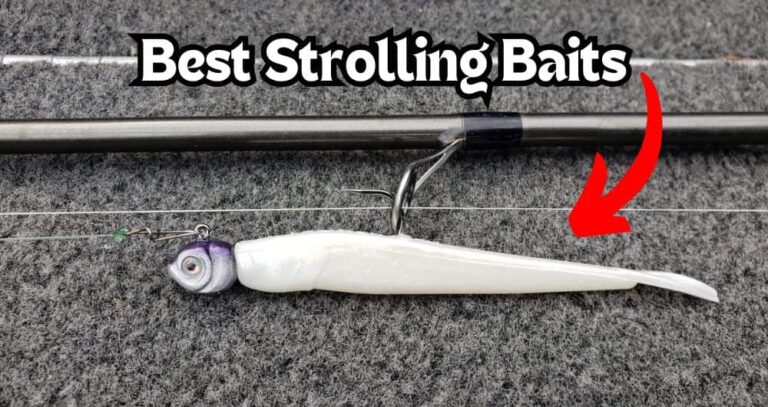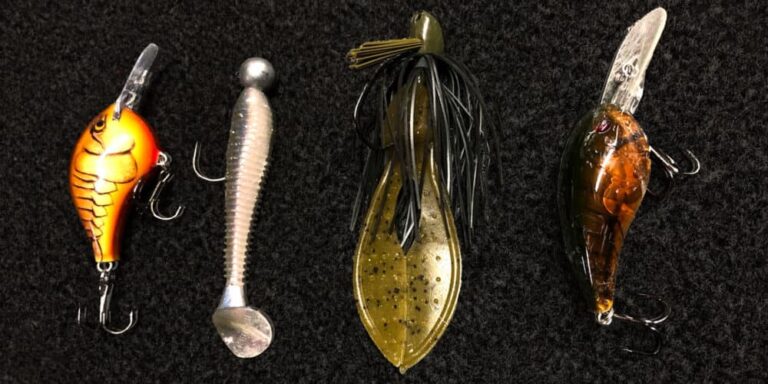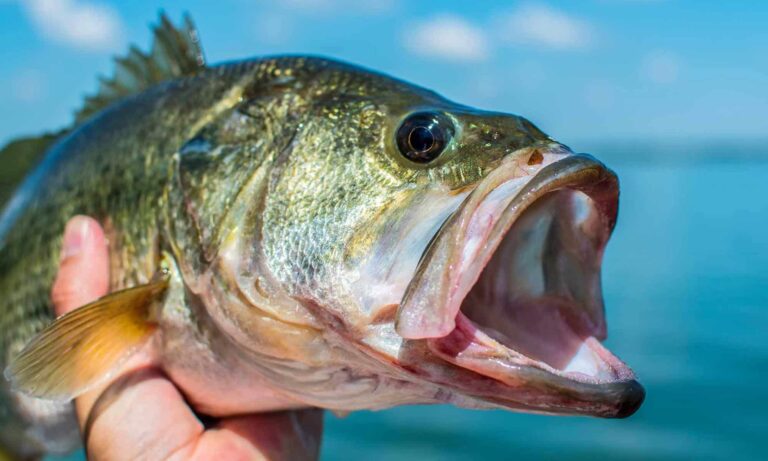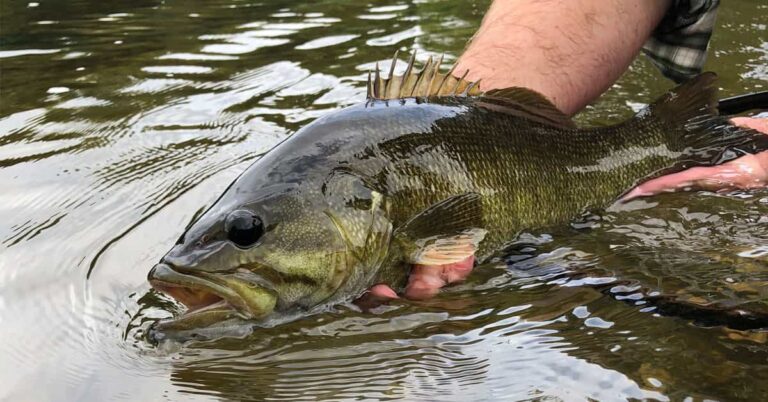Texas Rig Fishing for Bass: Complete Guide to Texas Rig Bass Fishing
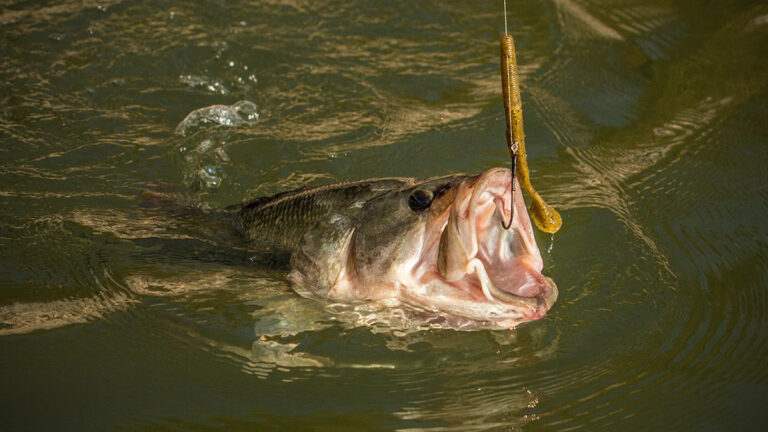
Hey there, angling enthusiasts! Are you ready to dive into the exciting world of bass fishing?
Well, get your gear ready because today we’re going to embark on a thrilling adventure specifically focused on Texas rig fishing for bass. This is one of the best bass fishing rigs for beginners and seasoned anglers alike.
We’ll explore the ins and outs of this popular technique, from understanding the rig setup to choosing the right bait and perfecting your casting techniques.
So, grab a seat, buckle up, and get ready to reel in some big ones as we unravel the secrets of Texas rig fishing for bass!
Texas Rig Setup

Picture this: you’re gearing up for a day of bass fishing, and you want to try out the Texas rig. So, what exactly is the Texas rig? It’s a versatile and effective fishing technique that involves rigging a soft plastic bait in a specific way to entice those elusive bass.
Now, let’s get to the heart of the matter and talk about the components of a classic Texas rig. Here’s what you’ll need:
- Hook: The hook is the essential element that secures your bait and ensures a solid hookset when a bass strikes. Texas rig hooks are typically offset or EWG worm hooks, known for their wide gap and sharp point.
- Weight: To get your bait down to the desired depth, you’ll need a weight. In the Texas rig, a bullet-shaped sinker or a worm weight is commonly used. The weight is threaded onto the line above the hook and helps the bait sink quickly.
- Soft Plastic Bait: The star of the show! Soft plastic baits are the lifelike imitations of worms, crawfish, lizards, or other creatures that bass love to gobble up. There are endless options available, including creature baits, worms, and flukes, which you can choose based on the fishing conditions and the mood of the bass.
So, that’s the lowdown on the components of a Texas rig. With these basic elements, you’ll be well on your way to setting up a Texas rig that will have those bass biting in no time. Remember, the beauty of the Texas rig lies in its simplicity and versatility, making it a go-to choice for bass anglers all over.
Advantages of the Texas Rig for Bass
- Versatility: One of the biggest perks of the Texas rig is its incredible versatility. It can be fished in various types of cover and structure, such as weeds, rocks, brush piles, and even submerged trees. No matter where those bass are hiding, the Texas rig allows you to present your bait in a way that mimics their natural prey, giving you a higher chance of enticing a strike.
- Weedless Design: Bass have a knack for lurking in weedy areas, but that doesn’t mean you have to sacrifice your bait to the weeds. The Texas rig’s weedless design helps minimize snagging and keeps your bait in the strike zone. By rigging the hook point back into the bait, you create a streamlined profile that glides through vegetation without getting tangled up. This means you can confidently work your bait in dense cover, increasing your chances of landing a bass.
- Stealthy Presentation: Bass can be crafty and easily spooked, so a subtle and natural presentation is key. The Texas rig shines in this department. Its setup allows the bait to move and appear more lifelike, imitating the movements of a real creature. The weight positioning and soft plastic bait combination give you the ability to make precise and subtle movements, enticing even the most cautious bass to strike.
- Effective in Various Water Conditions: Whether you’re fishing in clear water, stained water, or muddy water, the Texas rig remains effective. You can adjust the weight size and color of the soft plastic bait to match the water conditions and the bass’s preferences. This adaptability makes the Texas rig a go-to choice in different situations, ensuring you can catch bass no matter the water clarity.
- Beginner-Friendly: If you’re new to bass fishing or just getting started, the Texas rig is a great technique to learn. Its simplicity makes it easy to set up and fish effectively. You don’t need complex rigging or advanced skills to get started. With a little practice and patience, you’ll be able to master the Texas rig and start reeling in those bass with confidence.
Equipment Setup for Texas Rig Fishing
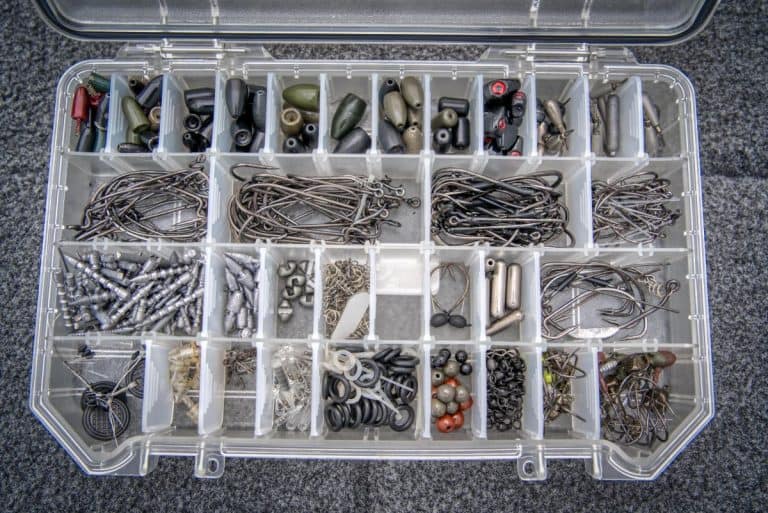
When it comes to Texas rig bass fishing, having the right equipment is essential. Here’s what you’ll need:
A. Fishing rod and reel: Choose a medium to medium-heavy spinning rod or baitcasting rod with a fast action for sensitivity and hook-setting power.
B. Fishing line: Options include monofilament, fluorocarbon, or braided line. Monofilament is versatile, fluorocarbon offers invisibility, and braided line provides strength.
C. Terminal tackle: Essential items include offset worm hooks (sizes 3/0 or 4/0), bullet-shaped sinkers or worm weights (1/8 to 1/2 ounce), and a variety of soft plastic baits like worms, creatures, crawfish, or lizards.
By having the right fishing rod and reel, selecting the appropriate fishing line, and having essential terminal tackle, you’ll be well-equipped for Texas rig bass fishing. Get out there, experiment, and enjoy the thrill of reeling in those bass!
Attaching Hooks, Weights, and Soft Plastics
- How to Texas Rig a Worm: Take your offset worm hook and insert the point into the head of the soft plastic bait. Slide the hook through the bait until the bend of the hook is concealed, making it weedless. Ensure that the hook’s point is exposed and ready to catch the fish when it strikes.
- Weight Placement: Grab your bullet-shaped sinker or worm weight. Slide the weight onto your fishing line and let it rest against the top of the hook eye. Some anglers prefer to use a pegging method to secure the weight in place. You can accomplish this by inserting a rubber peg or toothpick into the hole at the top of the weight, preventing it from sliding up and down the line.
- Bait Positioning: To maximize the Texas rig’s effectiveness, you want your soft plastic bait to look natural and enticing to the bass. Thread the bait onto the hook, starting at the point where the hook exits the bait. Slide it up the hook shank, covering the offset portion, until the bait is straight and aligned with the hook’s eye.
How to Fish a Texas Rig
Working the bait effectively is crucial for enticing bass to strike your Texas rig. Here are some tips to make your presentation irresistible:
- Retrieve Techniques: There are various retrieve techniques you can use with the Texas rig, such as:
- Slow and Steady: Retrieve the bait with a slow, steady motion, mimicking the movement of a natural creature. This is effective when bass are in a less active or sluggish mood.
- Hop and Pause: Use a series of short hops by lifting your rod tip and then allowing the bait to fall back to the bottom. Pause between hops to create a tantalizing action that can trigger bass into striking.
- Drag and Shake: Drag the bait along the bottom by slowly reeling in the line while periodically shaking the rod tip. This imitates a crawfish or worm moving through the water, often enticing bass to strike.
- Target Cover and Structure: Cast your Texas rig near areas where bass are likely to hide, such as weed beds, rocks, fallen trees, or submerged structure. Focus on working your bait around these areas, as bass often ambush prey from cover. Keep an eye out for any signs of movement or subtle strikes, as bass may strike when you least expect it.
- Vary the Speed and Depth: Experiment with the speed and depth of your retrieve to figure out what the bass prefer. Sometimes, a slow and subtle presentation works best, while other times a more aggressive and fast-paced approach triggers a reaction. Adjust the weight of your Texas rig to reach different depths and find where the bass are holding.
- Use Rod Movement: Add extra action to your bait by incorporating rod movement. Twitch your rod tip or gently shake it to impart additional movement to the soft plastic bait. This can make your presentation more enticing and trigger a bass to strike.
Adjustments Based on Water Conditions
- Water Clarity: In clear water, use natural-looking bait colors and finesse techniques. In stained/muddy water, opt for brighter colors and employ a more aggressive retrieve.
- Water Depth: Use lighter weights and slower retrieves in shallow water. For deep water, choose heavier weights and vary your retrieve technique.
- Weather Conditions: In sunny/clear skies, target shaded areas and slow down your presentation. In cloudy/overcast skies, try faster retrieves and more aggressive movements.
- Forage Availability: Match your soft plastic bait to the prevalent forage in the water.
Location and Seasonal Considerations
When it comes to Texas rig bass fishing, understanding the importance of location and seasonal considerations can greatly enhance your chances of success. Here’s what you need to know:
- Location:
- Cover and Structure: Bass love to hide and ambush their prey near cover and structure. Look for areas such as weed beds, submerged rocks, fallen trees, docks, or brush piles. These spots provide bass with shelter and a strategic advantage for feeding. Targeting these locations increases your chances of hooking into a bass.
- Water Currents: Pay attention to water currents as they can influence bass behavior. Bass often position themselves where they can conserve energy while waiting for food to be swept their way. Areas near points, channel edges, or drop-offs where currents create natural funnels can be productive for Texas rig fishing.
- Seasonal Considerations:
- Spring: During the spring, bass are in their pre-spawn, spawn, and post-spawn phases. Target shallow areas near spawning beds and cover, as bass become more aggressive and territorial. Use slower presentations and focus on imitating baitfish or crawfish to entice strikes.
- Summer: In the summer, bass tend to move deeper to find cooler water and feed. Look for structure and cover in deeper areas, such as points, humps, and ledges. Adjust your Texas rig with heavier weights to reach those depths, and experiment with different retrieve techniques to entice bass in warmer water.
- Fall: As the water cools down, bass become more active and feed aggressively. Focus on areas where baitfish are abundant, such as coves, points, or creek mouths. Use a variety of soft plastic baits to imitate the forage, and adjust your presentation based on the bass’s feeding patterns.
- Winter: Bass activity slows down in winter as they become less active and seek out deeper, more stable areas. Target deep drop-offs, rock piles, or submerged timber. Slow and subtle presentations with finesse techniques can be effective during the colder months.
Understanding the behavior of bass in different seasons and locating their preferred areas within a body of water are key factors in successful Texas rig bass fishing. Always observe and adapt your approach to the specific location and time of year to maximize your chances of hooking into those elusive bass.
Tips for Success Using a Texas Rig for Bass
- Experiment with different soft plastic bait colors, sizes, and styles to find what works best for the bass in your area.
- Vary your retrieve techniques, including slow and steady, hop and pause, and drag and shake, to trigger strikes from bass.
- Target areas with cover and structure, such as weeds, rocks, fallen trees, or submerged objects, where bass are likely to hide.
- Adjust your presentation based on water conditions, including clarity and depth, to match the preferences of the bass.
- Pay attention to weather conditions and adapt your approach accordingly, considering factors such as sunlight, cloud cover, and temperature.
- Use high-quality hooks and ensure they are properly rigged to increase hook-setting success.
- Stay observant and responsive to the behavior of the bass, adjusting your technique if they show signs of being finicky or unresponsive.
- Practice patience and persistence, as bass fishing can require time and effort to find success.
- Always follow local fishing regulations and practice catch-and-release to preserve the bass population and the ecosystem.
Best Soft Plastics for Texas Rig Fishing
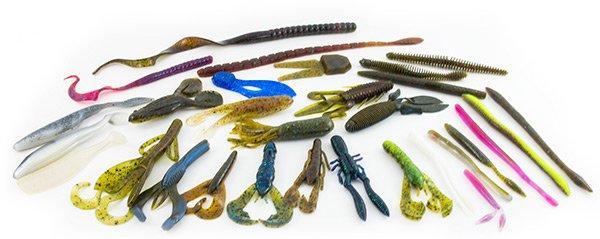
Ah, let’s talk about the best soft plastic baits for Texas rig bass fishing. When it comes to choosing the perfect bait, there are endless options out there, each with its own charm and ability to entice those bass. Here are some tried-and-true favorites:
1. Worms
Classic worms are a staple in any angler’s tackle box. Whether you go for straight-tail worms, curly-tail worms, or ribbon-tail worms, they all have one thing in common – they drive bass crazy! Their lifelike movement and tantalizing action make them irresistible to bass in a variety of conditions.
2. Crawfish Imitations
Bass have a natural inclination to gobble up crawfish, and luckily, soft plastic crawfish imitations deliver just that.
These baits mimic the appearance and movement of real crawfish, with their pinchers and wiggling legs. When bass are in a feisty mood or feeding near rocky areas, these baits can be pure magic.
3. Creature Baits
Creature baits are the chameleons of the soft plastic world. With their unique shapes, appendages, and textured bodies, they imitate a wide range of aquatic creatures like lizards, salamanders, or even alien creatures!
These versatile baits excel in enticing bass in various cover and structure scenarios.
4. Flukes
Flukes are slender, soft plastic baits with a forked tail that produces incredible action in the water.
They excel in mimicking baitfish, and their darting, erratic movements can trigger aggressive strikes from bass. These baits are perfect for covering water, imitating fleeing baitfish, and enticing reaction bites.
5. Senko Style
Ah, the famous Senkos – a go-to choice for many bass anglers. These thick-bodied, salt-impregnated baits have a unique fall rate and an incredible wiggle action that drives bass wild.
Whether you fish them weightless or rigged Texas style, Senkos have a proven track record of enticing big bites.
Common Challenges
Let’s address some common challenges and troubleshooting tips for Texas rig bass fishing:
- Snags and Hang-ups: Gently shake or pull from different angles to free a snagged rig. If needed, sacrifice the bait and break the line to retrieve it.
- Short Strikes or Missed Hooksets: Downsize your bait or try a different color to entice a more aggressive bite. Wait a bit longer before setting the hook to allow the bass to fully engulf the bait.
- Losing Bait: Rig the bait securely and thread it straight on the hook. Use a drop of super glue at the head. Carry extra baits for quick replacements.
- Foul Odors or Depleted Scent: Refresh the bait’s scent with attractants or scent sprays. Dip or apply attractant before casting to make the presentation more enticing.
Embrace challenges, adapt your tactics, and learn from each experience. By being prepared and open to new approaches, you’ll overcome obstacles and enjoy successful Texas rig bass fishing!
Recap of Texas Rig Bass Fishing
- The Texas rig is a versatile and effective technique for bass fishing.
- Components of the Texas rig include hooks, weights, and soft plastic baits.
- Choose a suitable fishing rod, reel, and line type for Texas rigging.
- Properly attach the hook, weight, and bait to set up the Texas rig.
- Work the bait effectively using various retrieve techniques and target areas with cover and structure.
- Select the best soft plastic baits, such as worms, crawfish imitations, creature baits, flukes, or Senkos.
- Adjust your presentation based on water conditions, including clarity and depth.
- Consider location and seasonal factors to locate bass and adapt your approach accordingly.
- Follow tips for success, such as experimenting, being observant, and practicing patience.
- Troubleshoot common challenges like snags, short strikes, losing bait, and scent depletion.
Tying this Off
We’ve covered everything from the basics of the Texas rig setup to selecting the right equipment, working the bait effectively, and overcoming common challenges.
By now, you should feel confident in your ability to rig up a Texas rig, choose the perfect soft plastic bait, and present it in a way that entices bass to strike.
Remember, practice makes perfect, so don’t be discouraged if you don’t catch a trophy bass on your first outing.
The beauty of Texas rig bass fishing lies in its versatility and adaptability. You can customize your setup to match the water conditions, adjust your presentation based on the behavior of the bass, and explore different techniques to find what works best for you.
So, cast your line, let it sink, and get ready for the thrill of reeling in those magnificent bass. Tight lines and happy fishing!

